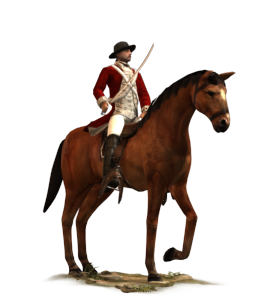Difference between revisions of "East India Company Cavalry (ETW Unit)"
Fire-dweller (talk | contribs) |
Fire-dweller (talk | contribs) |
||
| Line 1: | Line 1: | ||
| − | {{Unit|image=[[Image:EIC Cavalry.jpg]]|Class=Cavalry|Men=60|Guns=N/A|Recruitable From= | + | {{Unit|image=[[Image:EIC Cavalry.jpg]]|Class=Cavalry|Men=60|Guns=N/A|Recruitable From=Barracks, Military Governor's Barracks|Region=India|Recruitment Cost=950|Upkeep Cost=280|Technology Needed=None}} |
==Overview== | ==Overview== | ||
Revision as of 19:03, 7 November 2009
Overview
The officers and men in these units are Europeans, not locals, even though these regiments are raised in India. They are supposedly more reliable than native levies when defending European interests.
Company cavalry are equipped in European rather than Indian fashion; they fight as light, saber-armed cavalry. Their tasks include acting as scouts, screening the main body of an army, and pursuing fleeing enemies – taking a saber to someone already running away is likely to keep him running! It is not their main job to break enemy units or to fight other cavalry.
By 1700, the great European trading companies were so huge they could afford armies of their own, separate from the national army. The British East India Company, the Dutch “Vereenigde Oostindische Compagnie” (VOC) and the French “La Compagnie française des Indes orientales” all had armies, fleets and forts in India and the far east. The Dutch felt it profitable to have one fifth of their employees in uniform, and the other companies were not far behind.
